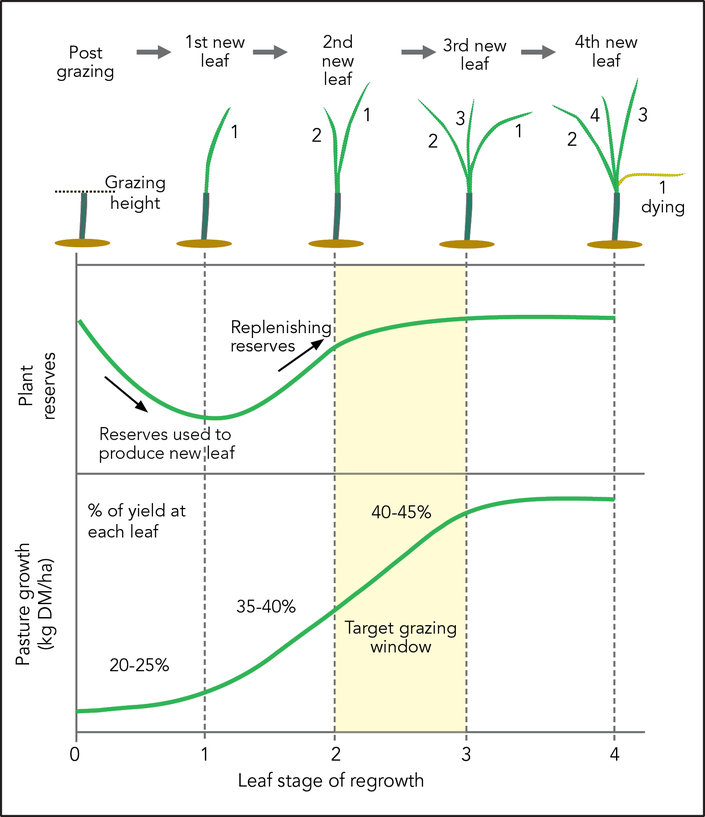Where do I start?!
- Consistency is king. Pasture thrives with routine, so always aim to graze at the same height, and to the same level, each time.
The best time to graze is when ryegrass tillers have 2.5-3 leaves. Any later, and dead matter will start to build up in the base of your pasture, because ryegrass can only keep 3 leaves alive simultaneously. Any earlier, and the pasture is not yet fully recovered from the last grazing.
If you’re rotationally grazing dairy cows, or beef cattle, aim to leave 5-6 cm of pasture behind when you move them to the next paddock. For sheep, leave 3-4 cm.

If you’re set stocked with sheep, try to keep pastures above 4-5 cm, but no higher than 8 cm. This is the Goldilocks zone – high enough to keep grass growing and animals well-fed, low enough to prevent shading.
- Too much growth for animals alone to control?
If silage is an option, cut light crops. Heavy crops smother baby tillers, weaken pasture, significantly delay re-growth and provide poorer quality feed. More details here.
Prioritise paddocks where high quality feed will be essential in summer, and/or those that will be difficult to clean up later.
.jpg?height=442&width=589)
- Don’t worry if you can’t graze to the same height every single time. Sometimes – especially with cows or cattle in wet weather – it’s just not possible. Look after your soils first, then focus back on your grazing management when conditions improve.


